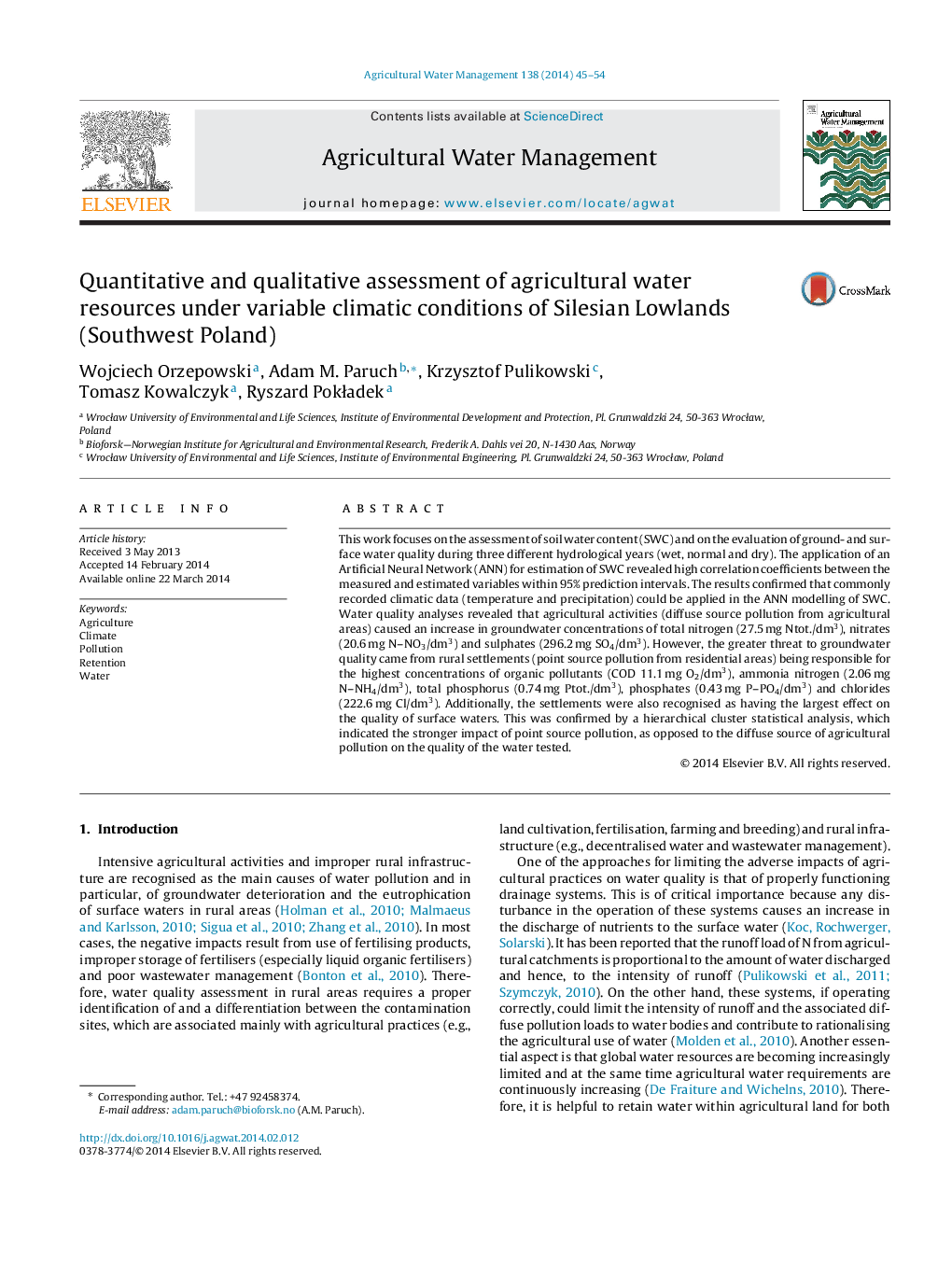| Article ID | Journal | Published Year | Pages | File Type |
|---|---|---|---|---|
| 4478700 | Agricultural Water Management | 2014 | 10 Pages |
This work focuses on the assessment of soil water content (SWC) and on the evaluation of ground- and surface water quality during three different hydrological years (wet, normal and dry). The application of an Artificial Neural Network (ANN) for estimation of SWC revealed high correlation coefficients between the measured and estimated variables within 95% prediction intervals. The results confirmed that commonly recorded climatic data (temperature and precipitation) could be applied in the ANN modelling of SWC. Water quality analyses revealed that agricultural activities (diffuse source pollution from agricultural areas) caused an increase in groundwater concentrations of total nitrogen (27.5 mg Ntot./dm3), nitrates (20.6 mg N–NO3/dm3) and sulphates (296.2 mg SO4/dm3). However, the greater threat to groundwater quality came from rural settlements (point source pollution from residential areas) being responsible for the highest concentrations of organic pollutants (COD 11.1 mg O2/dm3), ammonia nitrogen (2.06 mg N–NH4/dm3), total phosphorus (0.74 mg Ptot./dm3), phosphates (0.43 mg P–PO4/dm3) and chlorides (222.6 mg Cl/dm3). Additionally, the settlements were also recognised as having the largest effect on the quality of surface waters. This was confirmed by a hierarchical cluster statistical analysis, which indicated the stronger impact of point source pollution, as opposed to the diffuse source of agricultural pollution on the quality of the water tested.
